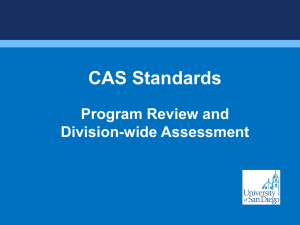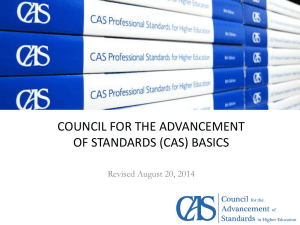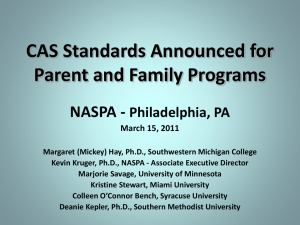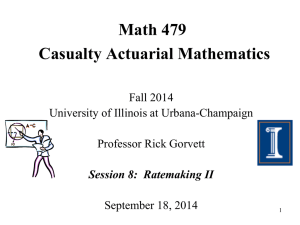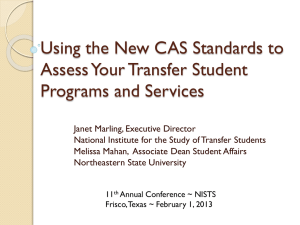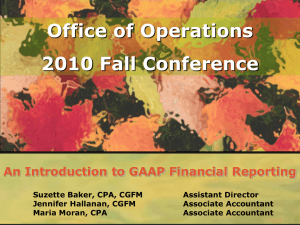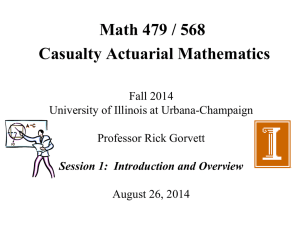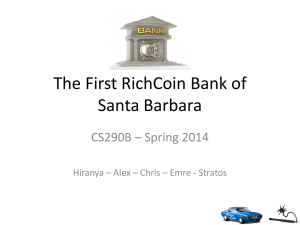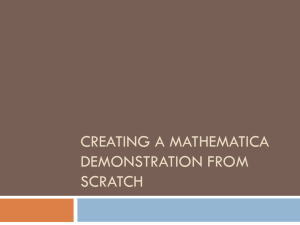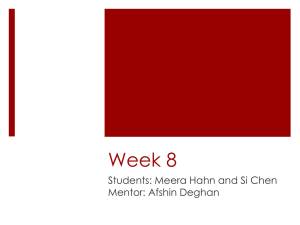Chapter 9
advertisement
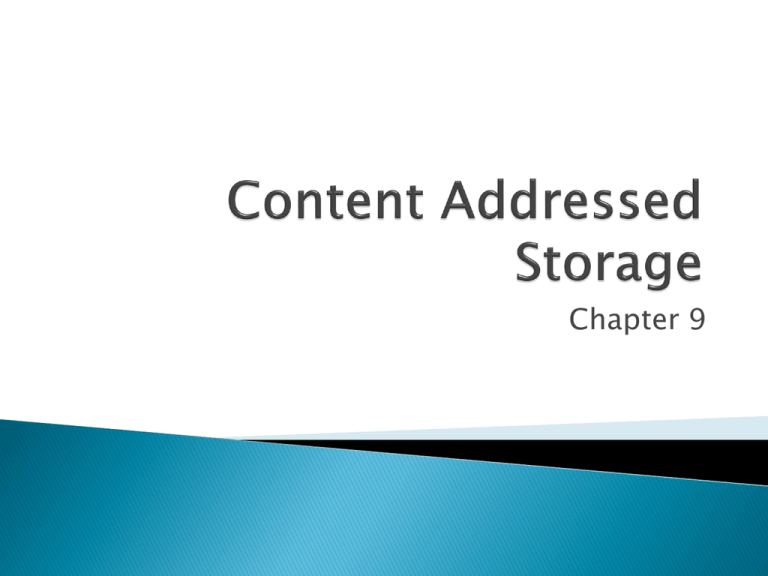
Section 2 : Storage Networking Technologies and Virtualization Chapter 9 Content Addressed Storage (CAS): features and Benefits of a CAS Upon completion of this chapter, you will be able to: Describe CAS, fixed content and archives, traditional storage solutions for archive Describe the features and benefits of a CAS based storage strategy List the physical and logical elements of CAS Describe the storage and retrieval process for CAS data objects Describe the best suited operational environments for CAS solutions Upon completion of this lesson, you be able to: Define fixed content Describe traditional archival solutions and its shortcoming Define Content Addressed Storage (CAS) List benefits of CAS Generate New Revenues Improve Service Levels Leverage Historical Value Digital Assets Retained For Active Reference And Value Electronic Documents •Contracts, claims, etc. •E-mail and attachments •Financial spread sheets •CAD/CAM designs •Presentations Digital Records •Documents – Checks, securities trades – Historical preservation •Photographs – Personal / professional •Surveys – Seismic, astronomic, geographic Rich Media •Medical – X-rays, MRIs, CTI •Video – News / media, movies – Security surveillance •Audio – Voicemail – Radio Fixed content is growing at more than 90% annually ◦ Significant amount of newly created information falls into this category ◦ New regulations require retention and data protection Often, long-term preservation is required (yearsdecades) Simultaneous multi-user online access is preferable to offline storage Need faster access to fixed content Need for location independent data, enabling technology refresh and migration Traditional storage methods are inadequate Three categories of archival solution are: ◦ Online, nearline, and offline based on the means of access Traditional archival solution were offline ◦ Traditional archival process used optical disks and tapes as media for archival ◦ An archive is often stored on a Write Once Read Many (WORM) device, such as a CD-ROM Tape is slow, and standards are always changing Optical is expensive, and requires vast amounts of media Recovering files from tape and optical is often time consuming Data on tape and optical is subject to media degradation CAS Both solution sophisticated media has emergedrequire as an alternative to traditional management archiving solutions Object-oriented, location-independent approach to data storage Repository for the “Objects” Access mechanism to interface with repository Globally unique identifiers provide access to objects Additional Task Research on role of CAS in ILM Strategy Content authenticity Content integrity Location independence Single-instance storage (SiS) Retention enforcement Record-level protection and disposition Technology independence Fast record retrieval Key points covered in this lesson: CAS Definition Challenges of Storing Fixed Content Shortcomings of Traditional Archiving Solutions Benefits of CAS CAS Architecture, Storage and Retrieval, Examples. Upon completion of this lesson, you will be able to: Describe CAS architecture Describe Physical and logical elements of CAS Describe data storage and retrieval process in CAS environment CAS examples Storage devices (CAS Based) ◦ Storage node ◦ Access node Servers (to which storage devices get connected) Client IP CAS System API Server Access Nodes Private LAN Storage Nodes Application Programming Interface (API) ◦ A set of function calls that enables communication between applications or between an application and an operating system API BLOB (Binary Large Object) ◦ The actual data without the descriptive information (metadata) ◦ The Distinct Bit Sequence (DBS) of user data represents the actual content of a file and is independent of the filename and physical location C-Clip Content Address (CA) C-Clip Descriptor File (CDF) ◦ A package containing the user's data and associated metadata ◦ C-Clip ID (C-Clip handle or C-Clip reference) is the CA that the system returns to the client application ◦ An identifier that uniquely addresses the content of a file and not its location. Unlike location-based addresses, content addresses are inherently stable and, once calculated, they never change and always refer to the same content ◦ The additional XML file that the system creates when making a C-Clip. This file includes the content addresses for all referenced BLOBs and associated metadata Client presents data to API to be archived Client Unique Content CAS System Address is calculated Application Server Object is sent to CAS System via CAS API over IP API C-Clip (Object) CDF Client presents data to API to be archived Client Unique Content CAS System Address is calculated Application Server Object is sent to CAS System via Object CAS API over IP API Acknowledgement returned to application CAS System validates the Content Address and stores the object Clip ID is retained and stored for future use 4 1 CAS authenticates the request and delivers the object Object is needed by an application CAS System Application Server Client API 3 2 Application finds Content Address of object to be retrieved C-Clip ID Retrieval request is sent to the CAS System via CAS API over IP Features available with most CAS systems are: ◦ Integrity checking ◦ Data protection ◦ ◦ ◦ ◦ ◦ Local replication Remote replication Load balancing Scalability Self-diagnosis and repair Report generation and event notification Fault tolerance Through the use of redundant components and data protection schemes ◦ Audit trails Documentation of management activities, access and disposition of data Hospital Patient Studies Stored locally for Short-Term Use (60 Days) API Application Server Data Stored on CAS CAS System Each X-ray image ranges from about 15MB to over 1GB Patient record is stored online for a period of 60-90 days Beyond 90 days patient records are archived Bank API Application Server CAS System Check image size is about 25KB Check imaging service provider may process 50– 90 million check images per month Checks are stored online for a period of 60 days Beyond 60 days data is archived Key points covered in this lesson: CAS architecture Physical and logical elements of CAS CAS storage and retrieval process CAS solution examples Key points covered in this chapter: Benefits of CAS based storage strategy Overview of physical and logical elements of CAS Storing and retrieving data from CAS CAS application examples

